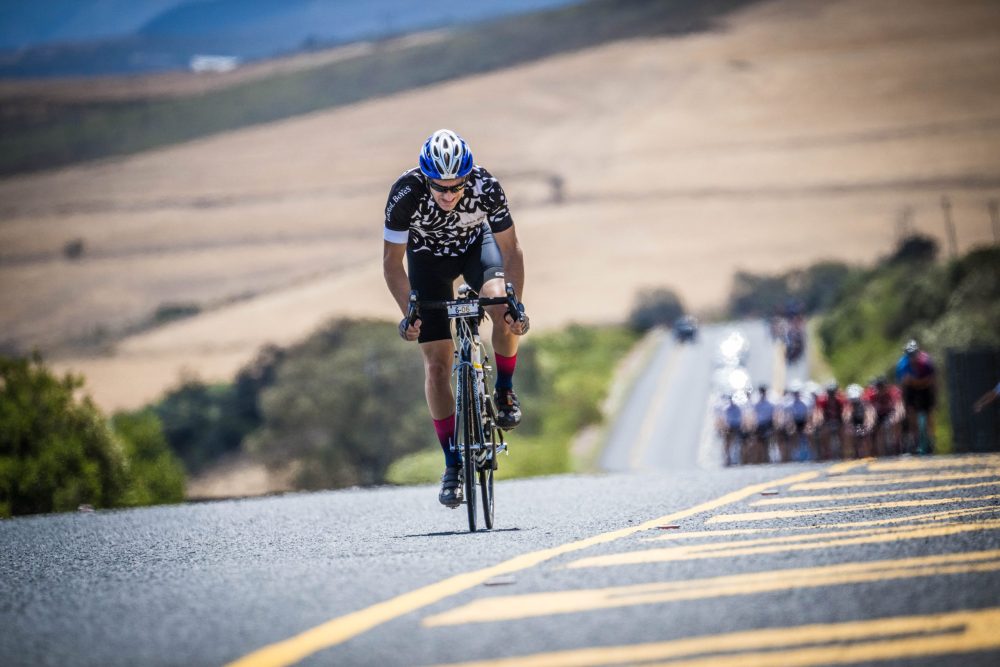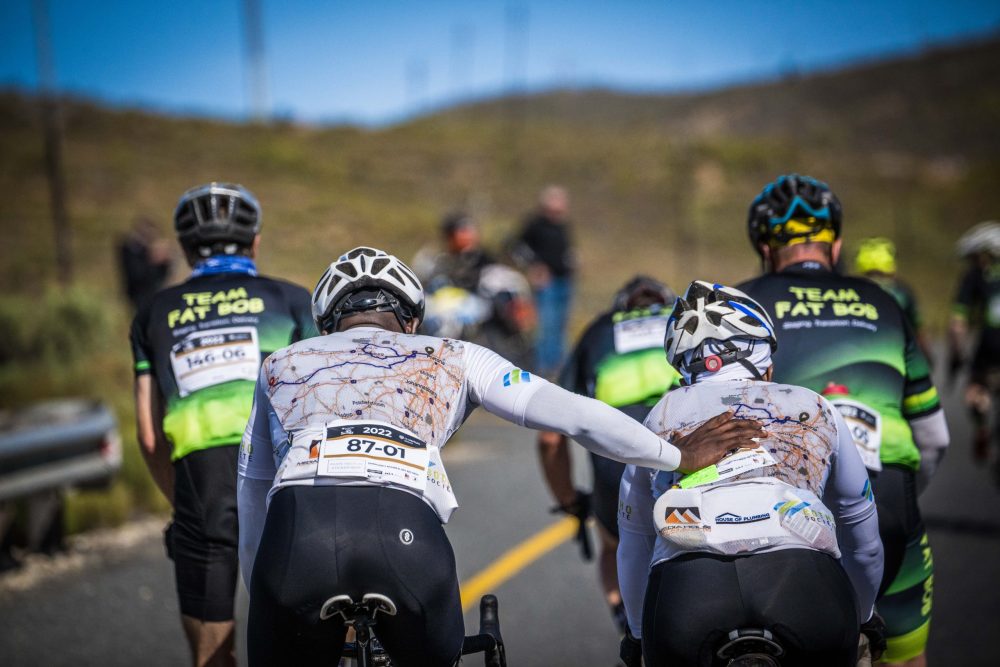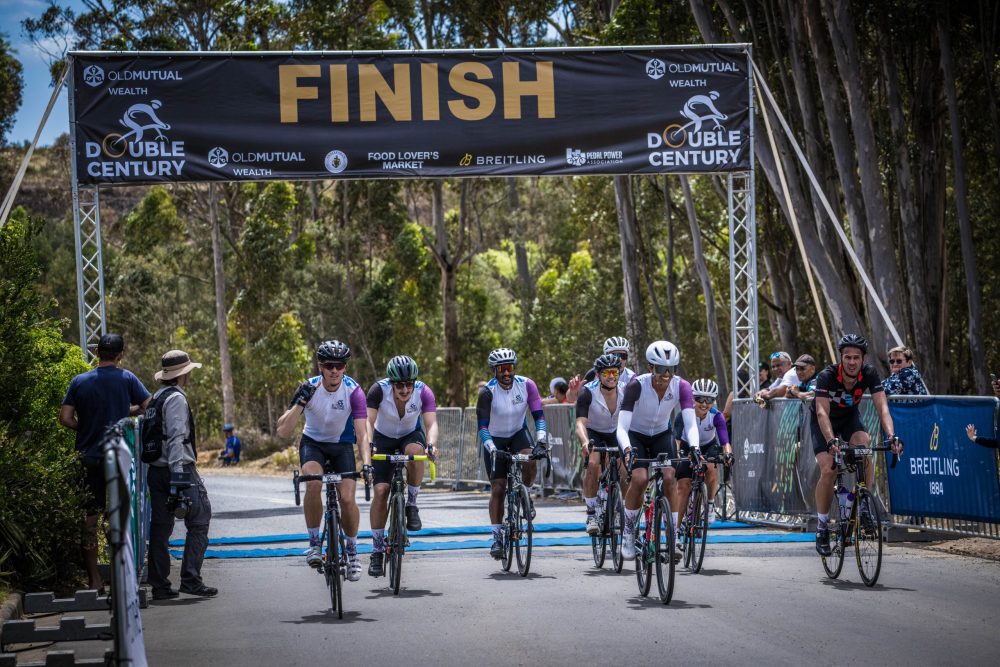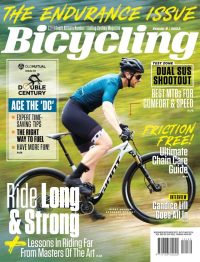Time-Saving Tips To Ace The DC (Or Any Long Day Out)
A journey of 202km offers plenty of opportunity to use (and lose) time. Here’s how to make the most of your long day in November.
The Old Mutual Wealth Double Century is an institution on the South African cycling calendar.
But 32 years ago, it was a silly idea birthed by a group of cycling enthusiasts just wanting to share their annual Big Day Out with others – spreading cycling love and camaraderie, shared suffering and triumph, on a route that many had dabbled in privately, but few had had the opportunity to ride in a formalised race environment.
And the market was ripe for it; the Pedal Power Association was running rich on a calendar that boasted more than 100 events a year, including the world-famous Cape Town Cycle Tour.
The first Double Century event left Natte Valleij, a farm on the Klapmuts road (owned by Charles Milner, one of the inspirations behind the event), and took the pioneers out on a 200km route that Milner and his friends used each spring to kick-start their Cycle Tour training – and as a reason to get out in the cold, wet winter months.
This was not a group ride you wanted to end up getting dropped on; the lonely road home was a long one. Not that this was a ride where you would get dropped – and today, the spirit of leaving no one behind that these pioneers made integral to the Double Century is celebrated with the Charles Milner medal, awarded to teams of 12 riders who finish together.
So, how does your team do that? We’ve taken the Bicycling office’s multiple Double Century finishes (ranging from third overall to stone last) and many, many social attempts in between, and put together a comprehensive guide to optimising your and your team’s efforts on the day.
How much time will we save you? Quite a lot – potentially an hour or more, if you want to take it seriously; and lots of grey hairs, if you just want a relaxed social roll around the Klein Karoo.
Tip 1: Teamwork
Do get together in the months prior to the event. Yes, you can just meet your teammates on the start line; but there is much to be said for knowing their weaknesses in advance. We always try for one coffee ride a month, with as many of the team present as possible.
There is no fitness value in these rides – our record is meeting at a coffee shop, coffee turning to beers over a morning without a pedal being turned, and then heading home to our bemused families. But this is where you start to build the connections that will make the last few hours of the OMWDC manageable.
If you are only reading this now, then this one is probably too late. Not to worry, we have plenty more to take note of during the event. Read on…
Tip 2: Start Out Slow And Steady
3km: The Start
Here’s where your Double Century begins to unravel… or not. Early indicators of who will be problematically keen appear before the steep little kicker out of Swellendam, and it’s vital to control these tendencies here. In the grand scheme, you won’t gain more than a few seconds by hoofing it up to the N2; but open up the hurt on your legs this early, and the whole team will pay the price later.
You won’t gain more than a few seconds by hoofing it up to the N2…
So maintain a conversational pace, and continue in that vein as you keep it tidy on the national road – while the traffic is aware of you, and the big, scary trucks might give you a slightly wider berth, this is still a busy national road, and a few minutes gained racing down it to the Buffelsjags left turn could well whack your legs for later. Treat it as a gentle warm-up, all the way through to Suurbraak, and you’ll have a far more enjoyable DC.
Tip 3: Stick Together
25km: Tradouw Pass
The first proper test of the Double Century is Tradouw Pass, and it’s a stinker. The key here, from a team perspective, is to practise a little cycling zen and avoid trying to break each other.
Yes, you might be a bit bored, maybe even a little cold, after the slow roll to the foot of the climb from Swellendam… but there will always be people in the group for whom this is a major obstacle (even if they’re too proud to admit it). Our best DC experiences have been when we’ve been able to ride Tradouw as a group, cajoling the non-climbers with kind words and the odd push.
Stop for a water refill at the small water table at the top – it’s a lot further to the next one than it looks on paper – and then enjoy, responsibly, the helter-skelter descent. We’ve always chosen to regroup at the T-junction outside Barrydale, rather than trying to get back together while rolling on the road; so the speed merchants can give it horns for a kilometre or two, before going back on duty for the drag to Op de Tradouw.
Tip 4: Take It Easy Along the R62
40km: The R62 Roll
The Route 62 experience is told in two halves. This first one, before the big regroup at the tin sheds, is where the team really needs to behave like one.
Our best days have been when we’ve put our two strongest riders on the front, with instructions to ride a gear easier than they feel comfortable with, and then leave them there – all the way to the foot of Op de Tradouw. They don’t and won’t need help with this, so make sure that no keen-beans try; by having your sergeant major for the day at the back, barking orders to keep formation.
Use the quiet time to eat and drink for the upcoming climb; if you hit it slightly bored, you’ve ridden this stretch perfectly – it really can hurt your legs later!

Tip 5: Tackle the Toughest Climb at Your Own Pace
63km: Op de Tradouw
One of the monster climbs of the Western Cape, this one; but completely underrated, probably because it looks more like a freeway than an alpine pass. Do not take this climb lightly. There’s a big regroup at the top, at the first proper aid station on the Double Century, so you can reward the strong riders who have dragged your team this far with a little spurt of performance.
Op de Tradouw comes at a funny time, mentally; you’re far enough into the OMWDC for your legs to be feeling the length of the day, but still far enough from the finish that it’s kinda depressing. This is totally normal, and it’s important for each team member to tackle this climb at their own pace.
There’s plenty of opportunity to make up time (and/or blow completely) later on the route, so climb as comfortably as you can without feeling the pressure to not let the team down. You aren’t –everyone’s feeling a little tender right now!
Tip 6: Refresh and Move On
70km: The Shed
The first proper refreshment stop is glorious; an opportunity to refill pockets and bottles, and to visit the green spaceships. Be warned: it’s also the first real chance, since the start line, to faff around and waste time. Five minutes becomes ten becomes twenty very easily here.
We’ve always tried to grab-and-go – there’s plenty of time to socialise in Ashton – and the front runners head through quickly to regroup on the other side of the festivities, in full view of where the stragglers come in. This puts a little pressure on the rest of the team to get a hurry on and not dawdle, which is a good thing; the next stretch has a fair amount of down, but also just enough up to make riding with cooled-down legs unpleasant.
Some of the more successful social teams send the front riders to pre-grab the food the back riders need, and fill their bottles for them… because one of the keys to getting struggling riders through from here to Ashton, and then to the finish, is to keep stopped time to the minimum. Not only does it hurt the stopwatch; once you’ve come to a halt, it becomes incrementally easier to chuck it all in the longer you’re stationary. Rather harry them through and out, so they have no choice.
Tip 7: Stick to Your Game Plan
75km: It’s All Downhill From Here
No, it isn't!
If we had a rand for every time we’ve heard that on a bike ride… we’d be riding the most beautiful bikes in the world, right? This stretch can be so brutal. And it’s often overlooked, because on the route profile it looks a doddle.
If it was important to use your strong riders before Op de Tradouw, here is where they’ll really come into their own. Same protocol: two on the front, the team captain at the back controlling things, and a gear easier than would normally be comfortable. The rollers into Montagu are steeper and longer than you remember… and if your legs are beginning to feel the fatigue (which they almost certainly will), they will hurt.
Success here depends on not splitting the group at all, and making sure the slowest riders are riding second or third wheel and can tell the front pair they’re okay, or not. Freewheel the steep downs for a little recovery, and roll gently into the ups so the tired minds in your group have a chance. There’s a lovely regroup just around the corner, and there’s no prize for getting to it two minutes sooner.
Tip 8: Use the 115km Refreshment Station To Relax & Recharge
115km: Lunch
Ashton is an oasis in a desert of pain, where you get the chance to sit and relax for half an hour. Use this time well; have comfy chairs, if possible, for the more broken riders in your team to actually relax on for a bit, and make sure they do. The stronger riders are almost at their most important here: by refilling bottles and fetching food for the weaker riders, they allow them to recover just that little bit more.
Keep an eye on the riders who have been struggling. They might feel too tired to eat or drink, but they need to.
And the calories munched here will be the ones that come to the fore as you head into the beginning of the three hills we come to a lot later. In fact, the most important role the faster riders in the group can play in the OMWDC big picture – far more critical than sitting on the front and breaking wind (snigger) – is to keep an eye on the weaker riders and make sure they’re eating throughout the ride.
Grab extra energy bars at the start and at the stops, and force-feed your charges; if they’re not hungry, that’s the first sign of drama to come much further down the road. If you make the DC an eating adventure with a bit of bike riding thrown in, you’ll finish a united, happy team.
Tip 9: Smile for the cameras
140km: Cannas and Jacarandas
Famously, the blooming of the jacarandas is a reminder to Pretoria varsity students that they should’ve started studying by now. It’s the beginning of the end in the DC too, but in a good way.
Your team has broken the back of the route, and the photographers are waiting in the bushes for the classic photos as the usual tailwind makes everyone feel fast and fit again for just a short while. This stretch, from the Robertson circle (mind the railway lines!) to the Red Bridge right turn, is possibly the loveliest stretch of the entire route. Yet it is fraught with danger; the temptation to turn your slightly rested legs too fast on this flatter stretch, especially with a tail wind, can come back to bite you on the final section.

Tip 10: Be Prepared For the Rollers
150km: Red Bridge
Here’s where it really all starts: the guts of the Old Mutual Wealth Double Century is in these rolling, annoying hills, from the beautiful Breede River crossing to the next refreshment stop. It’s frustrating; these hills, which precede the three well-publicised monsters closer to the finish, are never mentioned in any race guides, or by previous riders…
That could be because they’re just there, and have to be survived. They aren't long, but they are steep, and it’s generally pretty hot by the time we get there. This is where the pushers on your team get their first moment to chance their arms – digging a little deep is worth the effort, compared to earlier in the ride where we urged you to ride more conservatively.
Let’s call this stretch Vasbyt Alley. Because of all the segments that make up the awesome DC route, here is where you’ll need collective team strength to survive.
Tip 11: Try Stick Together
190km: The Three Witches
They have many names, none of them complimentary. Much like Suikerbossie in the Cape Town Cycle Tour, if you ride them on any other day, the three long drags that leave such an impression on DC riders’ psyches (when they have just 25km left to ride) are actually quite pleasant. But with 180km in your legs, they’re flipping horrible.
Once you’ve crested the last of the three – and please, try to keep the group together on all three, because stopping and waiting at the top of any is a recipe for cramp at this stage! – you can enjoy the long roll towards the finish. The final five kays or so are flattish, but surprisingly tough, even when your mind knows you’ve done all the hard stuff. So keep the racing snakes at the back, or they’ll break the fragile will of your strugglers at this late stage.
Tip 12: Dig Deep, it's the final final hurrah
201km: David’s Folly
They didn’t mention this little rise to the finish line, did they. It’s only 500m long, and it keeps us out of the traffic; but boy, it's steep. We’ve seen marriages under strain in these few minutes of pain.
But you really are almost there now; so you need your strong riders at the back, encouraging the rest so you can all roll the final flat 500m and look happy at the finish.

READ MORE ON: Double Century race day tips




